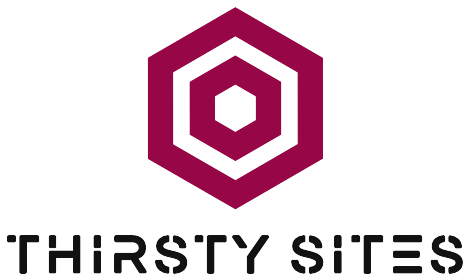Introduction: Understanding the Importance of Measuring ROI in Digital Marketing
In today’s rapidly evolving digital landscape, businesses invest heavily in online marketing channels to reach their target audiences, boost sales, and build brand awareness. However, without a clear method to measure the return on investment (ROI), these efforts can become a guessing game, leading to wasted resources and missed opportunities.
Measuring ROI in digital marketing not only helps justify marketing budgets but also informs strategic decisions, enabling marketers to optimize campaigns for maximum effectiveness. This comprehensive guide will explore key concepts, methods, and best practices to effectively measure ROI, ensuring your digital marketing endeavors deliver tangible results.
What is ROI in Digital Marketing?
ROI, or Return on Investment, is a metric that evaluates the profitability of an investment relative to its cost. In digital marketing, ROI quantifies the financial gains generated from marketing activities compared to the expenses incurred.
The basic formula for ROI is:
ROI = (Net Profit from Campaign / Cost of Campaign) x 100%
For example, if your digital marketing campaign costs $10,000 and generates $50,000 in revenue, your ROI is 400% [(50,000 – 10,000) / 10,000 x 100].
While straightforward, accurately calculating ROI in digital marketing involves considering multiple factors beyond direct revenue, such as brand awareness, customer engagement, and lifetime customer value.
Key Challenges in Measuring Digital Marketing ROI
Accurately assessing ROI in digital marketing can be complex due to various challenges:
- Attribution Complexity: Multi-channel and multi-touchpoint customer journeys make it difficult to attribute conversions accurately.
- Long Sales Cycles: Some products/services have extended decision-making processes, complicating immediate ROI measurement.
- Intangible Benefits: Improvements in brand awareness, customer loyalty, and reputation are hard to quantify monetarily.
- Data Silos: Fragmented data across platforms can hinder comprehensive analysis.
Strategies and Metrics to Measure ROI Effectively
1. Define Clear Goals and KPIs
Start by establishing specific, measurable, achievable, relevant, and time-bound (SMART) goals for your campaigns. These could include increasing website traffic, generating leads, boosting sales, or improving customer engagement.
Corresponding Key Performance Indicators (KPIs) might include conversion rate, cost per acquisition (CPA), click-through rate (CTR), or customer lifetime value (CLV). Clear goals streamline measurement and enable precise ROI calculation.
2. Track Conversions Accurately
Conversion tracking is vital to understanding how digital marketing efforts lead to desired actions. Implement tracking pixels, UTM parameters, and cookies across platforms to monitor user behavior and conversions.
Using tools like Google Analytics, Facebook Pixel, or other analytics platforms helps attribute conversions to specific campaigns, channels, or keywords.
3. Use Multi-Touch Attribution Modeling
Rather than assigning all credit to the last interaction, multi-touch attribution models distribute credit across multiple touchpoints, providing a nuanced view of how different channels contribute to conversions.
Models include linear, time decay, position-based, and data-driven attribution, each offering insights into campaign effectiveness and informing budget allocation.
4. Calculate Customer Lifetime Value (CLV)
CLV estimates the total revenue a business can expect from a customer over their entire relationship. Incorporating CLV into ROI calculations captures long-term profitability beyond immediate sales.
For example, an initial $50 acquisition cost might be justified if the average customer generates $500 over their lifetime. This broader perspective adjusts ROI metrics to reflect true marketing impact.
5. Consider Cost Components and Overheads
Beyond direct campaign costs (ad spend, creative development), include other expenses such as labor, tools, and platform fees. Accurate cost accounting ensures precise ROI measurement.
Use spreadsheets or specialized analytics software to track all relevant costs associated with your marketing efforts.
Tools and Technologies for Measuring ROI
Several tools facilitate comprehensive ROI analysis in digital marketing:
- Google Analytics: Provides in-depth website traffic and conversion data.
- HubSpot: Offers marketing ROI reporting integrated with CRM data.
- Google Ads & Facebook Ads Manager: Track ad performance and conversions directly.
- Marketing Automation Platforms: Tools like Marketo or Pardot help attribute leads and measure engagement over time.
Choosing the right combination of tools depends on your business size, industry, and campaign complexity. Integration between platforms is crucial for accurate data collection.
Best Practices to Enhance ROI Measurement Accuracy
- Establish a Tracking Infrastructure: Implement consistent tracking codes, pixels, and tags across all digital channels.
- Regular Data Audits: Periodically verify data integrity and address discrepancies promptly.
- Align Metrics with Objectives: Focus on KPIs that directly relate to your strategic goals.
- Use A/B Testing: Continuously optimize campaigns to improve performance and ROI.
- Integrate Sales and Marketing Data: Bridge the gap between marketing efforts and actual sales to measure true impact.
Beyond Monetary ROI: Considering Intangible Benefits
While direct revenue is the most straightforward ROI metric, digital marketing also produces intangible benefits, including:
- Enhanced brand awareness
- Increased customer engagement
- Improved customer loyalty and retention
- Valuable customer insights and data
Developing qualitative metrics, such as customer sentiment analysis and social media engagement scores, complements quantitative ROI measures and provides a holistic view of marketing success.
Conclusion: Making Data-Driven Decisions for Better ROI
Measuring ROI in digital marketing is essential for ensuring that your campaigns are not just creative but also profitable. By setting clear goals, utilizing proper tracking tools, adopting advanced attribution models, and considering long-term customer value, marketers can obtain a comprehensive understanding of their initiatives’ effectiveness.
Remember, ROI measurement is an ongoing process. The digital landscape constantly evolves, and so should your analytics strategies. Embrace data-driven decision-making, continuously optimize your campaigns, and watch your return on investment grow.
Ultimately, a well-informed approach to ROI measurement empowers your business to allocate resources wisely, improve marketing performance, and achieve sustained growth in a competitive digital world.

